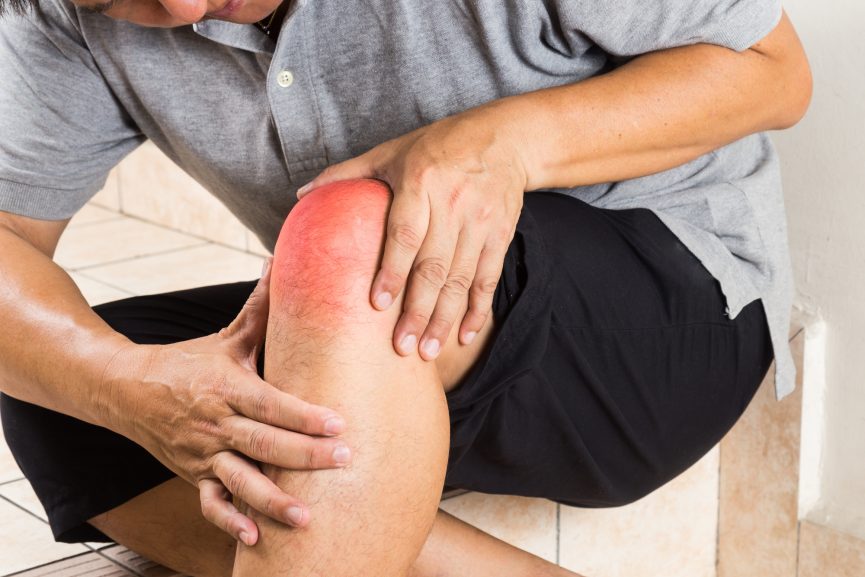Did you know that almost a quarter of all American adults are affected by arthritis? That’s nearly 59 million people that deal with painful and aching joints.
While there are a few different forms of arthritis that exist, osteoarthritis is the most common. If you currently suffer from osteoarthritis, knowing the stages of osteoarthritis can help you get the treatment you need. If you’ve ever asked yourself ‘what are the 4 stages of osteoarthritis’ continue reading to find out more. Before we go over the 4 stages…
What is Osteoarthritis?
As a form of arthritis, osteoarthritis affects the joints in the body. This chronic, degenerative condition mainly affects the following:
- Hands
- Knees
- Hips
- Spine
- Neck
- Feet
It affects people of every age and the damage varies from person to person. A few risk factors do exist for the development of this disease such as age, gender, and occupation. The good news is that treatments do exist for the varying stages of this disease. Let’s take a look at the first stage.
1. Stage One: Early
Stage 1 of osteoarthritis is considered the early stage. At this point, some people don’t experience symptoms. If symptoms are felt, they are generally mild. Any discomfort felt would be from mild joint pain or the beginning developments of bone spurs.
Treatment at this stage would be non-invasive and recommendations from your doctor might look like this:
- Yoga
- Weight loss
- Exercise
- Supplementation
- Over-the-counter medication
2. Stage Two: Minimal
The second stage is when bone spurs really begin to develop and can begin to feel painful. An increase in activity might cause a person to feel pain or stiffness in the joints. Conversely, some people may feel pain or stiffness after long sedentary periods. Essentially, too much movement or too little movement can exacerbate symptoms during this stage.
The pain and stiffness felt might impair regular movement during stage 2. Treatment options look similar to stage 1. Your doctor might recommend making a few holistic lifestyle changes like participating in low-impact exercise or taking over-the-counter medication.
In addition to lifestyle changes, support in the form of a brace or a wrap might be recommended. Heat therapy and cold therapy can also help alleviate soreness in joints by reducing inflammation.
3. Stage Three: Moderate
Stage 3 symptoms of osteoarthritis might cause pain or stiffness during any normal day to day activity such as walking or general movement. Visible swelling of the joints might occur at this stage, and bone spurs could become enlarged.
In this stage, cartilage might begin to erode. The gap between joint and bone thus begins to narrow. Cartilage is necessary for providing cushion, and when erosion begins to take place, pain and inflammation occur.
As with the previous two stages, doctor recommendations might still include over-the-counter medications and low-impact exercise. Due to the increased nature of symptoms, additional recommendations might include corticosteroid injections and physical therapy.
4. Stage Four: Severe
Of all the osteoarthritis stages, stage 4 is the most painful. Bone spurs are larger and more painful, and the cartilage between the joints is significantly reduced, if not gone completely.
Pain and stiffness might be severe enough that daily activities are difficult to do. Treatment options at this stage are more invasive as lifestyle changes don’t always provide enough relief. A physical exam is generally accompanied by lab tests and X-Rays to obtain a proper diagnosis.
Some treatment recommendations might include:
- Bone realignment surgery
- Arthroplasty
- Arthrodesis
At this stage, minimizing pain and reducing inflammation is the ultimate goal.
Osteoarthritis Treatment
A combination of some of the treatments above might be recommended to you in order to manage pain and reduce symptoms. Considering the stages above, treatment will of course look different for every patient. Some of the over-the-counter medications recommended to help with pain and inflammation might include acetaminophen, aspirin, or ibuprofen.
If you’re experiencing advanced stages, injections might be the next recommended course of action. Steroid injections can cause damage to the joints with repetitive use, therefore, multiple injections are not recommended. Cortisone is a common injection used for osteoarthritis. Other injections used might include platelet-rich plasma injections to fight inflammation and reduce swelling.
Surgery is generally reserved for severe cases of osteoarthritis. Surgery for OA is invasive and can entail the realigning of bones, fusing of joints, or total joint replacement altogether.
Prevention
To stave off having to go under the knife, making lifestyle adjustments in anticipation can help. It goes without saying that exercise is crucial for overall health. Exercise helps boost heart health, mood, and joint mobility. If high-impact exercise sounds daunting, that’s okay.
There are plenty of low-impact exercises you can incorporate that will help strengthen how your bones and joints function. Some options include:
- Swimming
- Walking
- Stationary Cycling
- Rowing
- Yoga or pilates
- Elliptical trainer
You can even use your body weight to complete low-impact exercises at home such as jumping jacks or squats.
What to Do for All Stages of Osteoarthritis
Our joints go through a lot of wear and tear as we age. Discomfort is common, but when you begin to lose the ability to complete basic tasks, going in for treatment might be the best course of action.
Here at Rejuvenate Your Health, we’re committed to restoring our patient’s active lifestyles. We provide high-quality, individualized care for all stages of osteoarthritis.
If you’re experiencing pain or stiffness from osteoarthritis, please don’t hesitate to utilize our contact form to get in touch with us today. We can’t wait to see you and help you on the way to healing.

